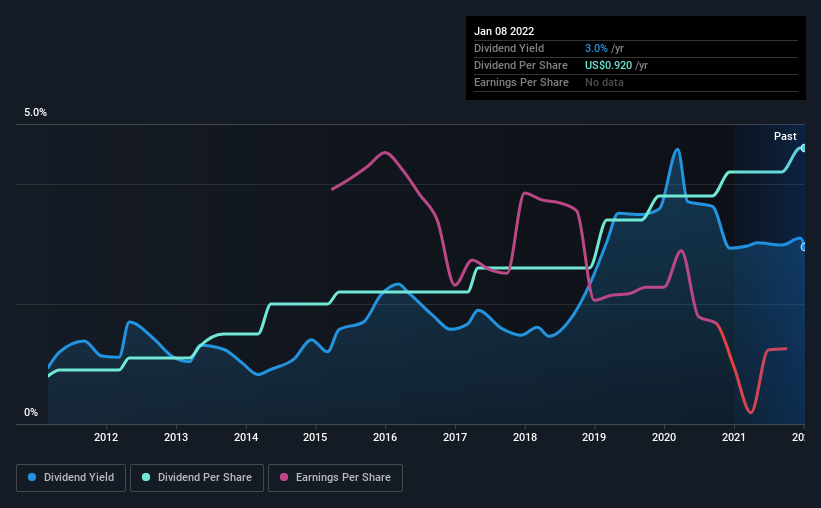Don't Buy Trinity Industries, Inc. (NYSE:TRN) For Its Next Dividend Without Doing These Checks
Trinity Industries, Inc. (NYSE:TRN) stock is about to trade ex-dividend in three days. The ex-dividend date is usually set to be one business day before the record date which is the cut-off date on which you must be present on the company's books as a shareholder in order to receive the dividend. It is important to be aware of the ex-dividend date because any trade on the stock needs to have been settled on or before the record date. This means that investors who purchase Trinity Industries' shares on or after the 13th of January will not receive the dividend, which will be paid on the 31st of January.
The company's next dividend payment will be US$0.23 per share, on the back of last year when the company paid a total of US$0.84 to shareholders. Based on the last year's worth of payments, Trinity Industries has a trailing yield of 3.0% on the current stock price of $31.17. Dividends are a major contributor to investment returns for long term holders, but only if the dividend continues to be paid. So we need to investigate whether Trinity Industries can afford its dividend, and if the dividend could grow.
Check out our latest analysis for Trinity Industries
Dividends are typically paid out of company income, so if a company pays out more than it earned, its dividend is usually at a higher risk of being cut. Trinity Industries's dividend is not well covered by earnings, as the company lost money last year. This is not a sustainable state of affairs, so it would be worth investigating if earnings are expected to recover. Considering the lack of profitability, we also need to check if the company generated enough cash flow to cover the dividend payment. If Trinity Industries didn't generate enough cash to pay the dividend, then it must have either paid from cash in the bank or by borrowing money, neither of which is sustainable in the long term. Over the past year it paid out 178% of its free cash flow as dividends, which is uncomfortably high. It's hard to consistently pay out more cash than you generate without either borrowing or using company cash, so we'd wonder how the company justifies this payout level.
Click here to see the company's payout ratio, plus analyst estimates of its future dividends.
Have Earnings And Dividends Been Growing?
When earnings decline, dividend companies become much harder to analyse and own safely. If earnings fall far enough, the company could be forced to cut its dividend. Trinity Industries reported a loss last year, and the general trend suggests its earnings have also been declining in recent years, making us wonder if the dividend is at risk.
Another key way to measure a company's dividend prospects is by measuring its historical rate of dividend growth. In the past 10 years, Trinity Industries has increased its dividend at approximately 19% a year on average.
We update our analysis on Trinity Industries every 24 hours, so you can always get the latest insights on its financial health, here.
To Sum It Up
Should investors buy Trinity Industries for the upcoming dividend? It's hard to get used to Trinity Industries paying a dividend despite reporting a loss over the past year. Worse, the dividend was not well covered by cash flow. Overall it doesn't look like the most suitable dividend stock for a long-term buy and hold investor.
So if you're still interested in Trinity Industries despite it's poor dividend qualities, you should be well informed on some of the risks facing this stock. We've identified 2 warning signs with Trinity Industries (at least 1 which shouldn't be ignored), and understanding them should be part of your investment process.
If you're in the market for dividend stocks, we recommend checking our list of top dividend stocks with a greater than 2% yield and an upcoming dividend.
Have feedback on this article? Concerned about the content? Get in touch with us directly. Alternatively, email editorial-team (at) simplywallst.com.
This article by Simply Wall St is general in nature. We provide commentary based on historical data and analyst forecasts only using an unbiased methodology and our articles are not intended to be financial advice. It does not constitute a recommendation to buy or sell any stock, and does not take account of your objectives, or your financial situation. We aim to bring you long-term focused analysis driven by fundamental data. Note that our analysis may not factor in the latest price-sensitive company announcements or qualitative material. Simply Wall St has no position in any stocks mentioned.

 Yahoo Finance
Yahoo Finance 
